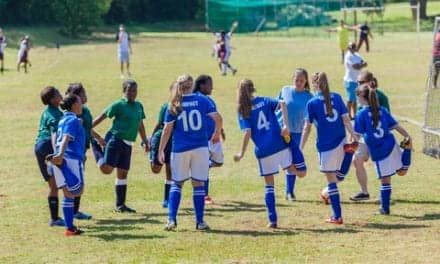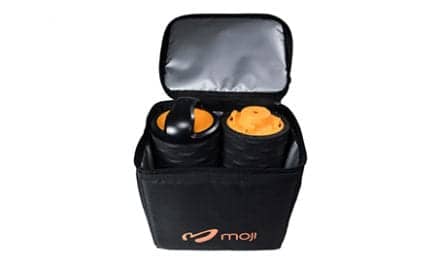Hospital for Special Surgery (HSS) in New York City has received an $18,000 grant from the American Orthopaedic Foot & Ankle Society’s Research Committee to study the effect of blood flow restriction (BFR) therapy following Achilles tendon rupture and repair.
Mark C. Drakos, MD, an orthopedic surgeon at HSS, is conducting the study along with his research team to potentially reduce the return-to-sport time after Achilles surgery by at least 30% and potentially make patients stronger as well, he notes in a media release.
“Blood flow restriction therapy is an accelerated rehabilitation protocol,” he says. “The therapy essentially creates an environment in the muscle where it makes the muscle work as hard as if it is lifting heavy weights when it is lifting smaller weights. Cutting off the blood flow tricks the muscle into working harder than it actually would be doing.”
Achilles rupture often presents a difficult recovery for patients, who commonly suffer a 10% to 30% strength reduction in the affected leg up to 1 year postoperatively.
“Achilles rupture is really common in people who do explosion types of sports such as basketball, football and soccer, any sport where you are doing a lot of cutting,” Drakos adds. “With regards to Achilles injuries, once you put the tendon back together, you can’t stress it right away or that will pull the repair apart. Regular rehabilitation can’t start until 6 weeks after surgery. Unfortunately, this can lead to significant muscle atrophy, which can take months to recover.
“Blood flow restriction therapy allows us to work the muscle right away, so it doesn’t atrophy and shrink. It safely allows the muscle to see some loading and develop more muscle, so that it can actually start to recover while the tendon is not completely healed yet,” he adds.
Blood flow restriction training is believed to bring about strengthening and hypertrophic (muscle building) effects similar to those achieved through completion of high-intensity training, but at significantly lower load intensities. In healthy elderly populations, studies have shown increases in muscle strength when using BFR therapy in combination with low-intensity exercises.
Research on the usefulness of BFR therapy with lower-intensity exercises in postoperative populations is in the early stages, with some studies showing benefit for individuals undergoing anterior cruciate ligament (ACL) reconstruction. Specifically, BRT therapy in the early postoperative period of ACL reconstruction has been shown to decrease atrophy and increase strength in the quadricep, when compared with immobilization and a physical therapy protocol.
A study investigating the use of BFR therapy following knee arthroscopy also demonstrated a greater increase in strength and thigh girth when compared to a control group. To date, the use of BFR therapy for Achilles rupture rehabilitation has not yet been studied in a quantitative and prospective fashion, the release explains.
The new BFR study is recruiting 60 patients, all of whom will have Achilles tendon repair surgery performed by Dr Drakos. Half of the patients will receive BFR therapy and half will receive standard rehabilitation therapy involving range of motion exercises at 2 weeks and muscle-building exercises at 6 weeks. In the BFR therapy group, a blood pressure cuff will be placed on the thigh of a patient while they start their rehab on post-op day 2 with exercises such as ankle range of motion, leg extensions, leg curls and leg press.
“We think that an ounce of prevention is worth a ton of cure,” Drakos comments. “If we can prevent the muscles from atrophying, which they would normally do after a surgery, and we can prevent that from happening in a safe and structured fashion, then this will help our patients get better faster. Usually, you can’t start rehab until 6 weeks after surgery.”
The cuff allows some blood flow into the muscle, but prevents much of the venous blood flow return, so the muscle engorges with blood.
“Ultimately, what this does is that a lot of the metabolites that encourage growth, including growth hormone, end up being sent to the areas to encourage hypertrophy,” Drakos comments. “Normally, if you want to make your muscles larger, you have to work with heavy weights. If you work out with light weights, you usually get toned, but you usually don’t get large increases in muscle mass. What blood flow restriction therapy allows you to do is use low weight but still get the same effect you would with large weights.”
A Cybex testing machine will objectively quantify changes in muscle strength, measuring how quickly the muscles fatigue and measuring their peak strength. All BFR therapy sessions will be supervised by a physical therapist certified to administer the therapy to ensure safety.
To date no significant negative side effects have been observed. However, this technique needs to be further researched to evaluate this, per the release. To minimize risks to patients and maximize safety, the BFR device used for therapy individualizes the tourniquet pressure for each patient to be between 60% and 80% of their limb occlusion pressure. Study criteria include active patients who are undergoing Achilles surgery for an acute tear without significant medical co-morbidities.
Other members of the research team include Stephanie Eble, BA, Oliver Hansen, BA, and Andrea Papson, DPT.
[Source(s): Hospital for Special Surgery, Business Wire]





